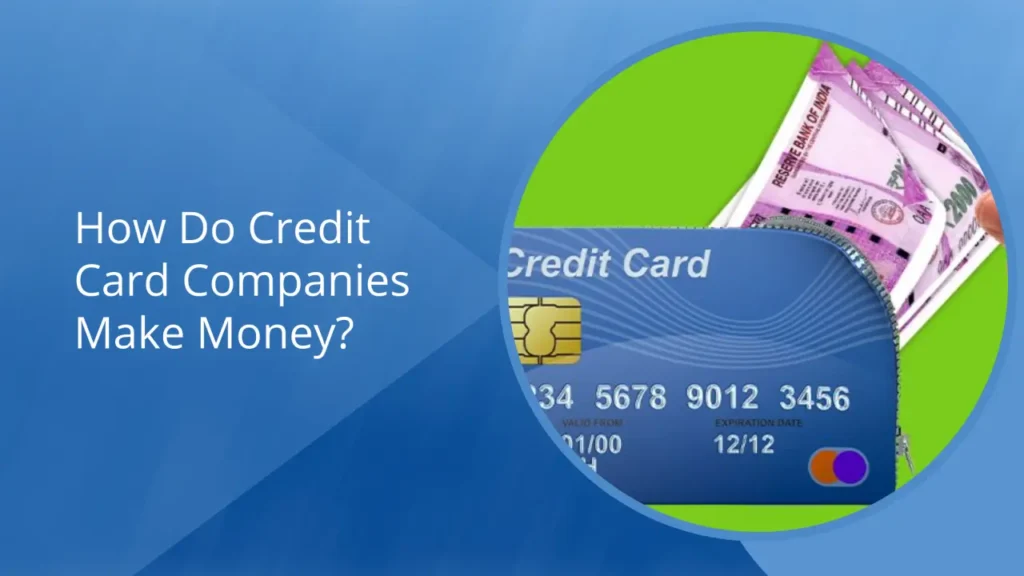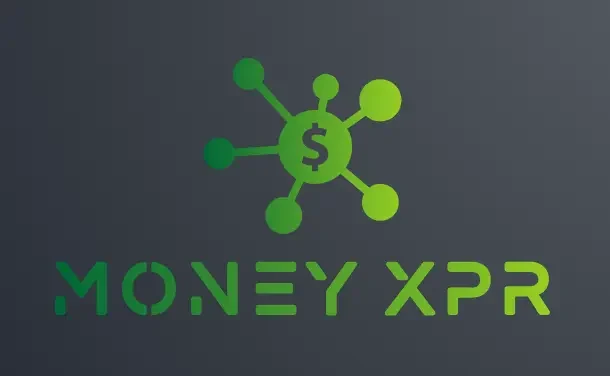Ever wondered how do credit card companies earn money? Learn about the different ways credit card companies make profit, from interest charges to fees and more.

How Do Credit Card Companies Make Profit?
Credit cards are a convenient financial tool used by millions of Americans every day. But have you ever wondered, how do credit card companies earn money? The business model behind credit cards is more complex than simply issuing plastic cards. Credit card companies have several revenue streams that generate massive profits. In this article, we’ll explore exactly how do credit card companies earn money, focusing on the various strategies they employ to turn your purchases into profits.
1. Interest on Outstanding Balances
One of the primary ways credit card companies earn money is through interest on outstanding balances. When cardholders carry a balance from month to month, they are charged interest. This is the most profitable revenue stream for many credit card companies. The interest rate, or APR (Annual Percentage Rate), typically ranges from 15% to 30%, depending on the cardholder’s creditworthiness.
For example, if you carry a balance of $1,000 and your APR is 20%, credit card companies earn $200 annually from the interest alone. This makes it clear how credit card companies earn money through interest on unpaid balances. The more people carry balances, the more profitable it is for the companies.
2. Fees Charged to Cardholders
Another way that credit card companies earn money is through a variety of fees charged to cardholders. These fees are designed to penalize consumers who fail to adhere to the terms of the card, providing an additional income stream. Some of the fees credit card companies charge include:
- Annual Fees: Many premium cards charge an annual fee, which can range from $50 to $500 or more. This fee is charged to cardholders simply for the privilege of using the card.
- Late Payment Fees: When a payment is missed, credit card companies charge a fee, typically around $25 to $40 per late payment. This is a significant source of income for the companies.
- Cash Advance Fees: If you use your credit card to take out a cash advance, you will likely be charged a fee of 3% to 5% of the amount withdrawn.
- Foreign Transaction Fees: Cardholders who use their cards abroad may incur a 1% to 3% fee on foreign transactions.
When you ask, how do credit card companies earn money, these fees are a major part of the answer. They generate consistent, reliable revenue, especially when cardholders fail to make full payments on time.
3. Merchant Fees and Interchange Fees
Credit card companies also earn money through merchant fees, also known as interchange fees. Every time a cardholder makes a purchase, the business accepting the payment has to pay a fee to the credit card issuer. This fee is typically between 1.5% and 3% of the transaction amount.
For instance, if a consumer makes a $100 purchase, the merchant might pay a fee of $2 to $3 to the credit card company. Even though the fee seems small per transaction, it adds up quickly considering the billions of credit card transactions that occur annually.
Understanding how credit card companies earn money from merchants helps clarify how businesses and credit card networks benefit from consumer purchases. This is another significant revenue stream, especially for major card issuers like Visa, MasterCard, and American Express.
4. Co-Branding Partnerships and Rewards Programs
Many credit cards offer rewards programs, and a large portion of these rewards are funded through partnerships between the credit card companies and third-party businesses. For instance, many credit cards have co-branded partnerships with airlines, hotels, or retailers.
When a consumer uses a co-branded credit card, both the merchant and the credit card company benefit. The merchant pays the credit card company a fee, and the cardholder earns rewards points, miles, or cash back. This incentivizes consumers to keep using their cards and make larger purchases.
How Do Credit Card Companies Make Profit from Rewards?
While rewards programs may seem like a way for consumers to benefit, credit card companies make profit by structuring these programs strategically. They often partner with merchants who pay fees for each transaction made with the card, creating a win-win situation for both the credit card issuer and the merchant. Meanwhile, the costs of the rewards are generally much lower than the interchange fees, allowing credit card companies to profit substantially from these partnerships.
5. Credit Card Insurance and Add-Ons
Credit card companies also make money from optional insurance products and add-on services. These can include travel insurance, purchase protection, or extended warranties. Many consumers opt into these services, either voluntarily or as part of a premium credit card package.
For example, if you purchase rental car insurance through your credit card, or you add fraud protection services, the credit card company earns premiums on these products. These services are another way credit card companies can increase their bottom line, often without adding significant operational costs.
6. Data and Marketing Insights
Another increasingly important way that credit card companies earn money is through data monetization. Credit card companies have vast amounts of data on consumer spending habits. This data can be highly valuable for marketers looking to target specific groups of consumers with tailored advertisements.
Credit card companies can sell aggregated consumer data or use it internally for targeted promotions, allowing them to make money off this invaluable resource. This means that credit card companies can profit not just from direct financial transactions but also by leveraging data insights to drive future revenue.
The Nilson Report
- Description: The Nilson Report is a trusted source for global payment card industry news and statistics. It provides in-depth reports on credit card transactions, revenue, merchant fees, and more.
- Website: The Nilson Report
Conclusion: How Do Credit Card Companies Earn Money?
To summarize, how do credit card companies earn money? The answer is multifaceted. Credit card companies make a significant portion of their profits from interest on unpaid balances. Fees like late payment charges, annual fees, and foreign transaction fees provide additional revenue streams. Merchant and interchange fees ensure the companies profit every time a consumer swipes their card. Co-branding partnerships with major retailers and airlines also add to their income.
Additionally, credit card companies can monetize consumer behavior data and sell or use it for marketing purposes. Whether through rewards programs or insurance products, there are several ways in which credit card companies earn money, turning every purchase, transaction, and partnership into a revenue-generating opportunity.
By understanding how credit card companies earn money, consumers can make more informed choices about which credit cards to use and how to avoid unnecessary fees. So, the next time you swipe your card, remember, credit card companies are making money from various sources—while you reap the benefits or costs depending on how you use your card.
Key Takeaways:
- How do credit card companies earn money? Primarily through interest on balances, fees, and merchant transactions.
- Credit card companies make profit from partnerships with retailers, co-branded cards, and consumer rewards.
- Data monetization is a growing income stream for credit card companies, leveraging consumer spending habits.
By understanding these methods, you can navigate your credit card usage more strategically—avoiding fees while maximizing the benefits they offer.
Related Articles:
- How Does a Credit Card Work? A Comprehensive Guide to Understanding Credit Cards
- Best Credit Cards for Military Personnel: Top Picks to Maximize Your Benefits in 2025
- Best Prepaid Credit Cards to Build Credit in USA in 2025: Your Ultimate Guide to Improving Your Credit Score
How do credit card companies make money: FAQs
1. How do credit card companies make profit from interest?
Credit card companies earn money through the interest charged on outstanding balances. If a cardholder does not pay their full balance by the due date, the credit card company charges an interest rate (APR) on the remaining balance. These interest charges can range from 15% to 30% or more, depending on the cardholder’s credit profile, making interest one of the primary revenue streams for credit card companies.
2. How do credit card companies make profit from fees?
Credit card companies make money from various fees that cardholders incur. These fees include:
Annual Fees: Charged to cardholders for the privilege of using the card, which can range from $50 to $500 or more.
Late Payment Fees: Imposed if a cardholder fails to make a payment on time.
Cash Advance Fees: Charged when a cardholder withdraws cash from an ATM using their credit card.
Foreign Transaction Fees: Applied to purchases made outside the cardholder’s home country.
These fees contribute to a consistent revenue stream for credit card companies.
3. How do credit card companies make profit from merchant transactions?
Every time a consumer uses a credit card for a purchase, the merchant has to pay a fee to the credit card company, known as an interchange fee. This fee typically ranges from 1.5% to 3% of the transaction amount. So, whether you’re buying groceries or booking a flight, credit card companies make money from the merchant’s transaction fees.
4. How do credit card companies make profit from rewards programs?
Credit card companies partner with businesses like airlines, hotels, and retailers to offer co-branded credit cards and reward programs. When you make a purchase using your rewards card, the credit card company earns an interchange fee from the merchant. While cardholders earn rewards, the companies benefit by increasing transaction volume and charging merchants for each purchase made.
5. How do credit card companies use customer data to make profit?
Credit card companies use the vast amount of data they collect from cardholders’ spending habits to gain insights into consumer behavior. This data can be used for targeted marketing campaigns, where companies offer special promotions or services based on a cardholder’s purchase history. Additionally, some companies may sell anonymized, aggregated data to third-party marketers, generating another revenue stream.






